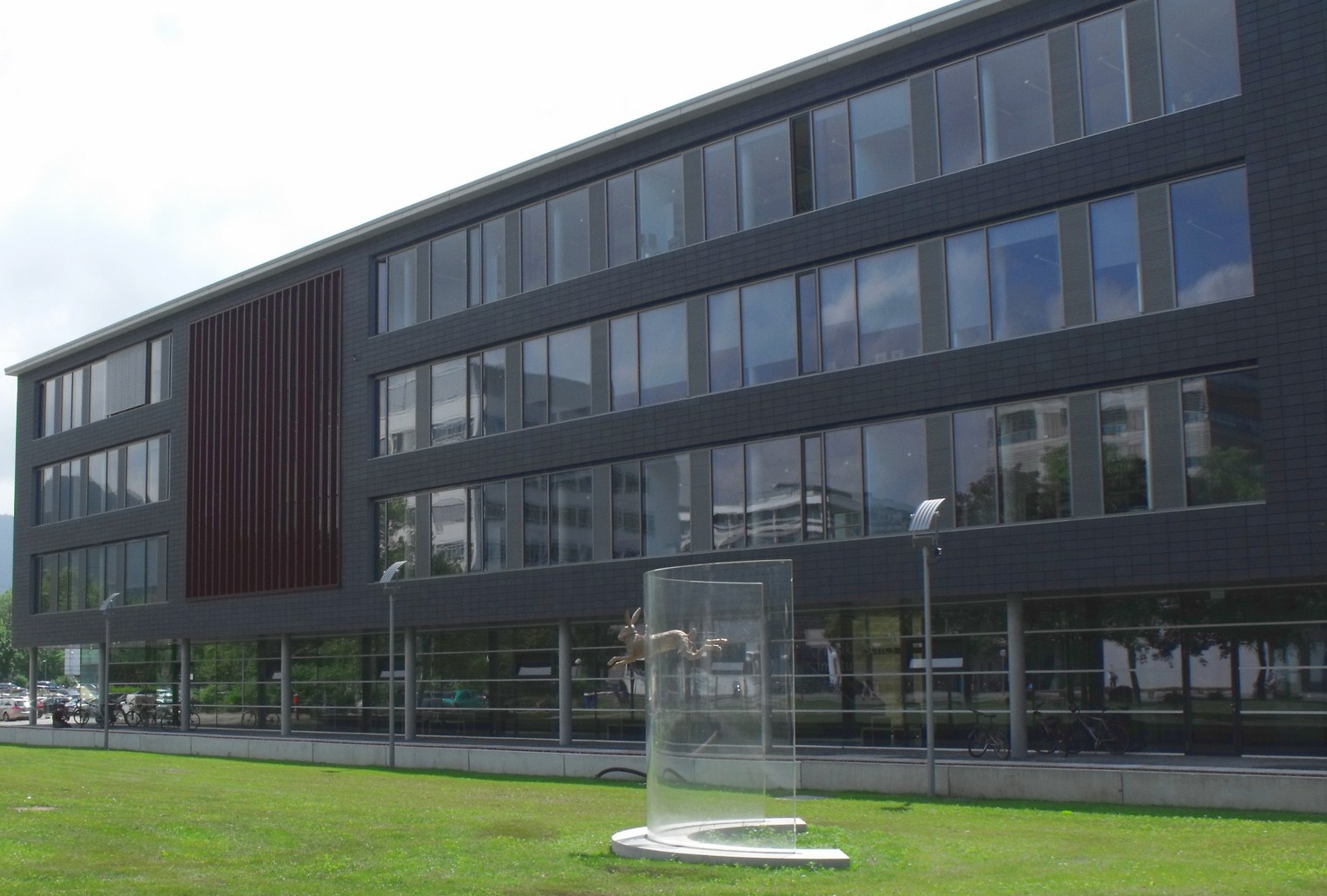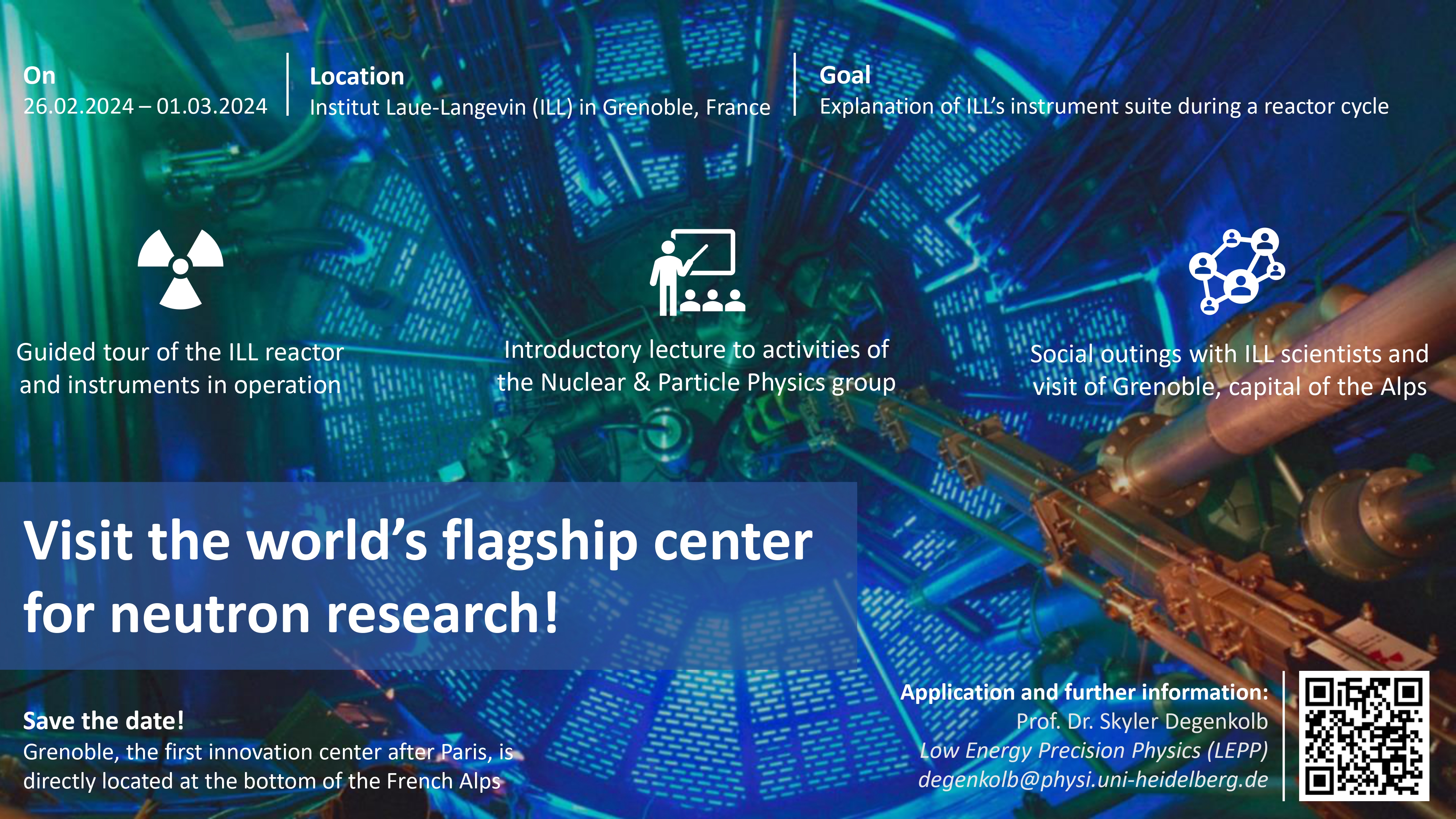Stellenangebote - Alle Stellen
- Alle Stellen
- Angestellter
- Postdoc
- Doktorarbeiten
- Diplomarbeiten
- Staatsexamensarbeiten
- Bachelorarbeiten
- Master Arbeiten
- Projektpraktika
- MiniForschungen
- HiWi Jobs
Bachelorarbeiten
| Development of a new pixel detector in High Voltage-MAPS technology | André Schöning |
| Our group is developing new pixel detectors based on the High-Voltage MAPS (monolithic active pixel detector) technology. Monolithic detectors are in many respects superior compared to standard hybrid silicon detectors. They are used for the new Mu3e experiment and considered for LHC-High Luminosity Upgrades. We offer several bachelor and master theses in this area. This project also qualifies as Projektpraktikum. | |
| Experimentelle und theoretische Tests der Quantenmechanik bei niedrigsten Energien | Maarten DeKieviet |
Das in Heidelberg entwickelte 3He-Atomstrahl-Spinecho-Spektrometer ermöglicht das Vermessen kleinster Energieänderungen (~100 peV) in der Wechselwirkung zwischen Atomen und Felder oder Materie. Das Experiment ist in seiner Form weltweit einzigartig und erforscht derzeit:
Für diese spannenden und grundlegenden physikalischen Fragen können wir Hilfe gebrauchen, sowohl am Experiment, als auch bei der Theorie. Interesse mit zu machen? Dann meldet euch bei:
| |
| Planung und Aufbau vom neuen GIHAS-Experiment am CAM | Maarten DeKieviet |
In dem gerade neu fertig gestellten Gebäude INF225, dem „Center for Advanced Materials (CAM)“, soll eine Atomstrahl-Apparatur aufgebaut werden für „Grazing Incidence He Atom Scattering“. Dieses GIHAS-Experiment ist eine Weiterentwicklung des erfolgreichen 3He-Atomstrahl-Spinecho-Spektrometer, das am Physikalischen Institut (INF226) entwickelt wurde und dort für die Grundlagenforschung eingesetzt wird. Das GIHAS soll sich der Erforschung der Oberflächendynamik organischer Materialien widmen und baut auf ein existierendes Flugzeit-Spektrometer auf. Ziel dieser BSc-Arbeit ist es das letztere ins neue Gebäude auf zu bauen, unter Berücksichtigung von den Randbedingungen, die die neuen Modalitäten verlangen. Es gibt also nicht nur viel Erfahrung zu sammeln beim „hands-on“ Aufbauen vom Experiment im Labor, sondern auch beim detailgetreuen Planen von zukünftiger Hardware mit Hilfe moderner CAD-Programme.
| |
| Muon Physics at PSI | André Schöning |
The Paul Scherrer Institute (PSI, Switzerland) operates the highest intensity proton accelerator (HIPA) in the world. This facility also provides high intensity muons beams where the muons are produced in pion decays. An upgrade of the accelerator is planned for 2026 with the goal to increase the muon beam intensity by almost two orders of magnitude, thus providing 10^10 muons per second. This upgrade will dramatically increase the discvery potential for rare physics processes like mu->eee (Mu3e Phase II) and mu-> e gamma which are also called the "golden" muon decay channels. Simulation and design studies need to be performed to reduce background and optimise the sensitivity. | |
| Geometric algebra: The Grand Unifying Math ! | Maarten DeKieviet |
Instead of having special mathematics for all the different fields of physics, Geometric Algebra (GA) supplies a unified and unifying mathematical language for the whole of physics. It not only allows for a geometric interpretation of the constituent elements, it uncovers hidden connections between the otherwise seemingly unrelated mathematical descriptions. „Why hasn‘t anyone told me that before?“ is a regularly heard, awing reaction of students being exposed to this language for the first time. We are currently searching for discrepancies with and extensions of the regular mathematical approach, both theoretically and experimentally. These are exciting times, come and join us! | |
| Track Reconstruction with Graph Neural Networks for the ATLAS Trigger System | André Schöning, |
Our group explores the feasibility of applying modern machine learning algorithms such as Graph Neural
| |
|
Bitte beachten sie: |
Um neue offene Stellen einzutragen, benutzen Sie bitte das Formular auf den internen Seiten.




